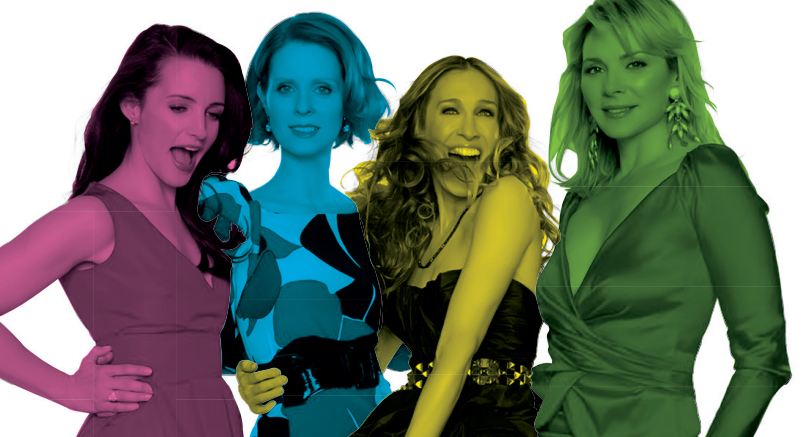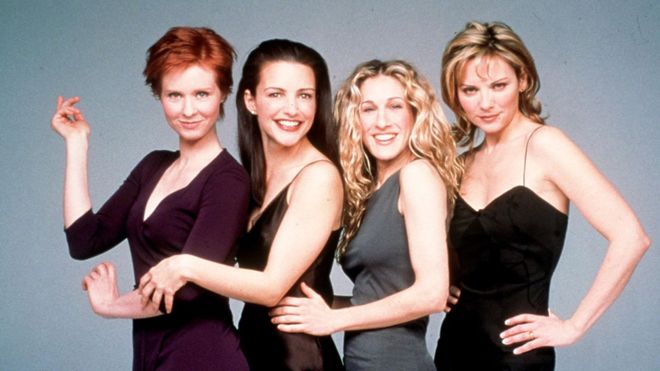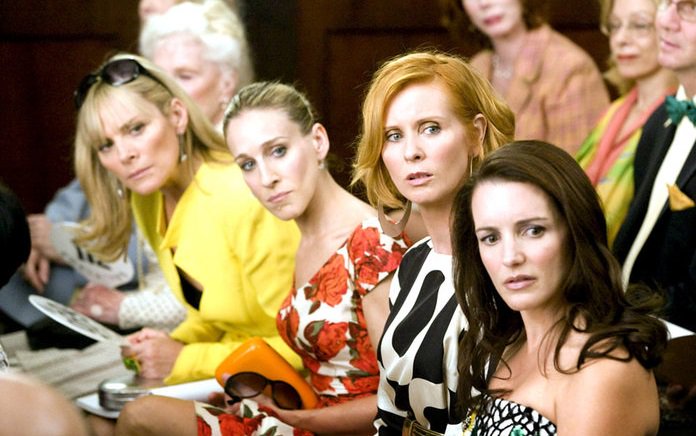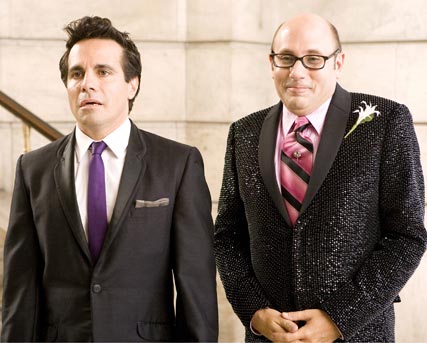The enduring and (mostly) endearing legacy of ‘Sex and the City’
Juno Dawson dissects a beloved but often flawed TV phenomenon.
By Will Stroude

Words: Juno Dawson
This article was first published in Attitude issue 301, October 2018
It has been 20 years since John James Preston, aka Mr Big, told New York Star columnist Carrie Bradshaw he’d “abso-fuckin’- lutely” experienced love, in the first episode of HBO’s Sex and the City.
This influential series, spanning six seasons, one good film and one very bad film, was purportedly about women, but at the helm were two gay men.
In a “what are you doing with your life?” revelation, Darren Star, who’d already created Beverly Hills 90210 in his twenties, optioned the columns of Candace Bushnell.
With Cybill writer Michael Patrick King, he fleshed out the central relationship between Carrie and unnamed toxic bachelor, Mr Big, and solidified the sisterhood of Carrie’s friendship circle.

The casting was note perfect: Sarah Jessica Parker was already a confirmed movie star, Kim Cattrall (best remembered as the mannequin from Mannequin), Melrose Place alumnus Kristen Davis, and Cynthia Nixon, now a leading political figure in the US.
Star and King steered all six seasons of the show on TV and King directed both movie spin-offs. Even Marge Simpson commented in an episode of The Simpsons: “That’s the show about four women acting like gay guys.”
This accusation was often levelled at the series by feminist commentators. “Another example that feminism is dead is the popularity of Sex and the City,” said columnist Joan Swirsky, “sending out the unmistakable messages… that careers, money, looks and, ostensibly, intelligence are nothing compared to doing anything to get a man, including endlessly obsessing about the subject, engaging in loveless, even like-less, sexual encounters, and agonising over intimacy.”

Hindsight has been kinder to Carrie, and criticism has softened. In 1998, were real women jumping into taxis to agonise over a friend’s potential anal sex? No, probably not, but SATC encouraged women (and men) to openly discuss sex during the notably frigid post-Aids era.
In some ways, it felt as if King and Star were peeping their heads out of the sex cave and checking if it was safe to come out. And it was. I think Carrie et al emboldened women and gay men alike to enjoy sex and enjoy recounting it to their friends, shame-free. Talking about safe sex encourages safe sex.
Debuting the same year as Will & Grace, it wasn’t as yet the norm to see gay men on television, least of all sexually active ones. While both Stanford Blatch (Willie Garson) and Anthony Marentino (Mario Cantone) fulfil the tiresome GBF trope, both were permitted character development and transcended some clichés. Oh, until their unlikely wedding.

Like Friends, SATC is not without issues — or clangers. Carrie refers to bisexuality as “a lay-over on the way to gaytown”, Samantha is “paying a fortune to live in a neighbourhood that’s trendy by day and tranny by night,” and only two notable black characters — played by Blair Underwood (Robert) and Jennifer Hudson (Louise) — feature in the show’s startlingly white version of New York. And let’s not even get started on Carrie mocking a Muslim woman eating a chip in the second film.
Carrie and co. cannot be said to “act like gay men” because gay men are not a homogenous group who shop and shag their way around expensive breakfast venues. To suggest that is wildly homophobic. But I think Star and King love women and meant well.
They presented an aspirational, if flawed, vision of the world, where women had the same freedoms as men. And that’s not such a bad legacy.
